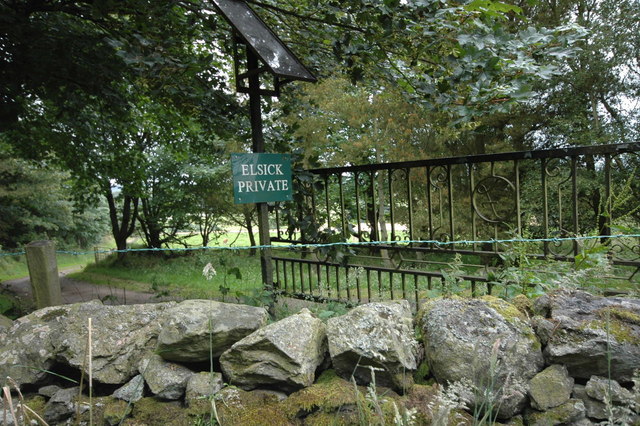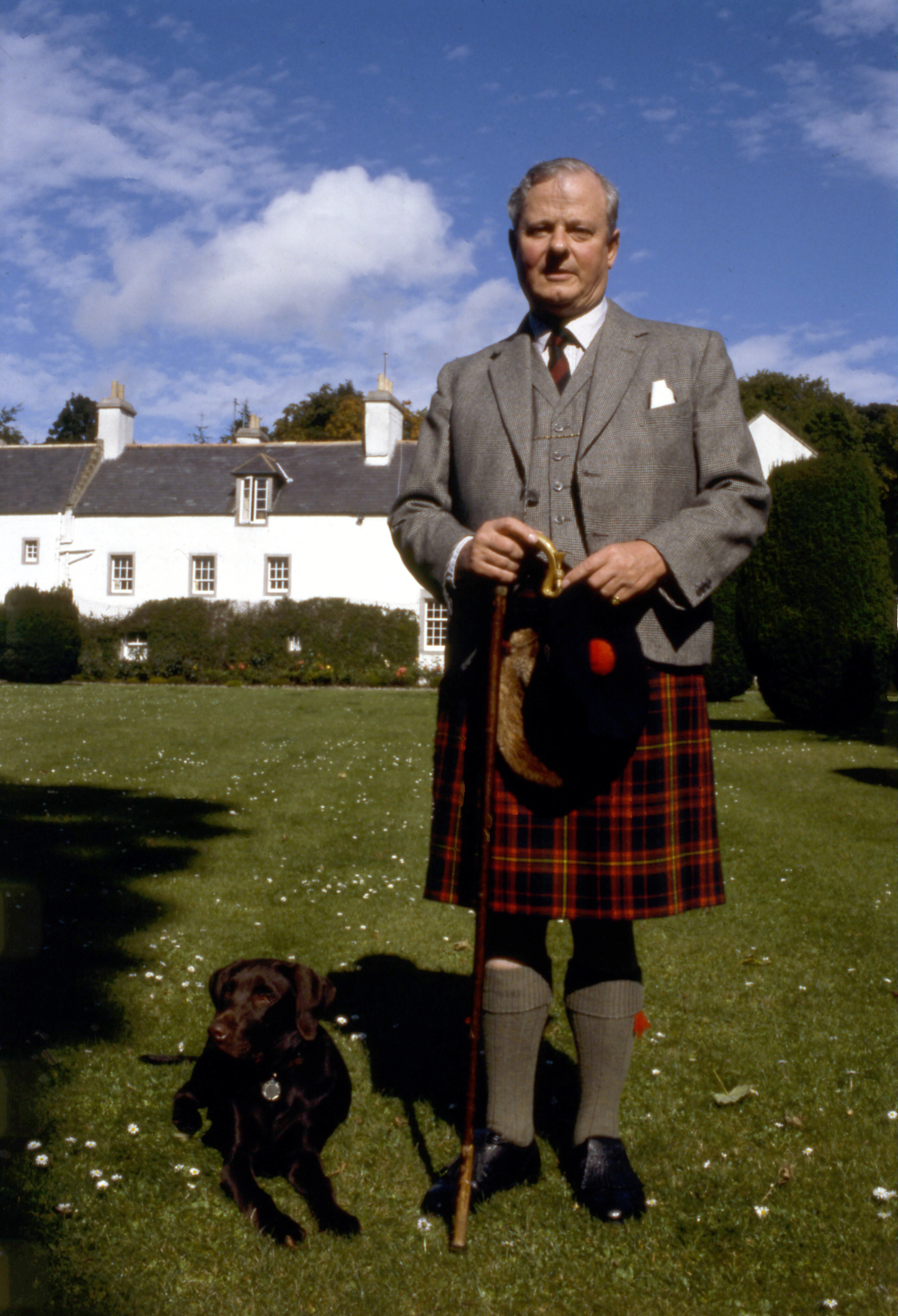Elsick House on:
[Wikipedia]
[Google]
[Amazon]

 Elsick House is a
Elsick House is a

 Elsick House is a
Elsick House is a historic house
A historic house generally meets several criteria before being listed by an official body as "historic." Generally the building is at least a certain age, depending on the rules for the individual list. A second factor is that the building be in ...
in Kincardineshire
Kincardineshire, also known as the Mearns (from the Scottish Gaelic meaning "the Stewartry"), is a historic county, registration county and lieutenancy area on the coast of northeast Scotland. It is bounded by Aberdeenshire on the north and ...
(now part of Aberdeenshire), North-East Scotland. It is situated in an agricultural area about two miles from the North Sea
The North Sea lies between Great Britain, Norway, Denmark, Germany, the Netherlands and Belgium. An epeiric sea, epeiric sea on the European continental shelf, it connects to the Atlantic Ocean through the English Channel in the south and the ...
near the town of Newtonhill
Newtonhill is a commuter town in Kincardineshire, Scotland. It is popular due to its location, just six miles south of Aberdeen with easy reach of Stonehaven and with views over the North Sea.
History
The town was originally called Skateraw. Sk ...
; the Elsick Estate is situated within the watershed of the Burn of Elsick
The Burn of Elsick is a coastal stream in Aberdeenshire, Scotland that discharges to the North Sea. This watercourse drains primarily agricultural lands and enters the North Sea at Newtonhill.
History
The Burn of Elsick flows under the Causey M ...
, a stream that traverses the estate. The house is located on the Elsick Estate (), and is the present family seat of the Duke of Fife
Duke of Fife is a title in the Peerage of the United Kingdom that has been created twice, in both cases for Alexander Duff, 1st Duke of Fife and 6th Earl Fife, who in 1889 married Princess Louise, the eldest daughter of Albert Edward, Princ ...
.
Early area history
Elsick House is located near the ancientCausey Mounth
The Causey Mounth is an ancient drovers' road over the coastal fringe of the Grampian Mountains in Aberdeenshire, Scotland. This route was developed as the main highway between Stonehaven and Aberdeen around the 12th century AD and it continu ...
trackway
Historic roads (historic trails in USA and Canada) are paths or routes that have historical importance due to their use over a period of time. Examples exist from prehistoric times until the early 20th century. They include ancient trackways ...
, which road was constructed in medieval
In the history of Europe, the Middle Ages or medieval period lasted approximately from the late 5th to the late 15th centuries, similar to the post-classical period of global history. It began with the fall of the Western Roman Empire ...
times to make passable this only available route across the coast
The coast, also known as the coastline or seashore, is defined as the area where land meets the ocean, or as a line that forms the boundary between the land and the coastline. The Earth has around of coastline. Coasts are important zones in ...
al region of the Grampian
Grampian ( gd, Roinn a' Mhonaidh) was one of nine former local government regions of Scotland created in 1975 by the Local Government (Scotland) Act 1973 and abolished in 1996 by the Local Government etc. (Scotland) Act 1994. The region t ...
Mounth
The Mounth ( ) is the broad upland in northeast Scotland between the Highland Boundary and the River Dee, at the eastern end of the Grampians.
Name and etymology
The name ''Mounth'' is ultimately of Pictish origin. The name is derived from ...
connecting points south of Stonehaven
Stonehaven ( , ) is a town in Scotland. It lies on Scotland's northeast coast and had a population of 11,602 at the 2011 Census.
After the demise of the town of Kincardine, which was gradually abandoned after the destruction of its royal cast ...
to Aberdeen
Aberdeen (; sco, Aiberdeen ; gd, Obar Dheathain ; la, Aberdonia) is a city in North East Scotland, and is the third most populous city in the country. Aberdeen is one of Scotland's 32 local government council areas (as Aberdeen City), and ...
. This ancient drovers' road
A drovers' road, drove ''roador droveway is a route for droving livestock on foot from one place to another, such as to market or between summer and winter pasture (see transhumance). Many drovers' roads were ancient routes of unknown age; ot ...
specifically connected the River Dee crossing (where the present Bridge of Dee
The Bridge of Dee or Brig o Dee ( gd, Drochaid Dhè) is a road bridge over the River Dee in Aberdeen, Scotland. The term is also used for the surrounding area of the city. Dating from 1527,Richards, J.M., ''The National Trust Book of Bridges ...
is situated) via Portlethen Moss
The Portlethen Moss is an acidic bog nature reserve located to the west of the town of Portlethen, Aberdeenshire in Scotland. Like other mosses, this wetland area supports a variety of plant and animal species, even though it has been subject ...
, Muchalls Castle
Muchalls Castle stands overlooking the North Sea in the countryside of Kincardine and Mearns, Aberdeenshire, Scotland. The lower course is a well-preserved Romanesque, double-groined 13th-century tower house structure, built by the Frasers of ...
and Stonehaven
Stonehaven ( , ) is a town in Scotland. It lies on Scotland's northeast coast and had a population of 11,602 at the 2011 Census.
After the demise of the town of Kincardine, which was gradually abandoned after the destruction of its royal cast ...
to the south. The route was that taken by William Keith, 7th Earl Marischal
William Keith, 7th Earl Marischal (16101670 or 1671) was a Scottish nobleman and Covenanter. He was the eldest son of William Keith, 6th Earl Marischal.
Life
During the English Civil War, the 7th Earl Marischal joined James Graham, 1st Marques ...
and the Marquess of Montrose
A marquess (; french: marquis ), es, marqués, pt, marquês. is a nobleman of high hereditary rank in various European peerages and in those of some of their former colonies. The German language equivalent is Markgraf (margrave). A woman w ...
when they led a Covenanter army of 9000 men in the first battle of the Civil War in 1639.Watt, Archibald, ''Highways and Byways around Kincardineshire'', Stonehaven Heritage Society (1985)
See also
* Cookney Church *Bannerman baronets
The Bannerman Baronetcy, of Elsick in the County of Kincardine, is a title in the Baronetage of Nova Scotia. It was created on 28 December 1682 for Alexander Bannerman. The eleventh Baronet was a pioneer military aviator. The twelfth Baronet wa ...
* Chapelton of Elsick
References
Country houses in Aberdeenshire {{Aberdeenshire-stub